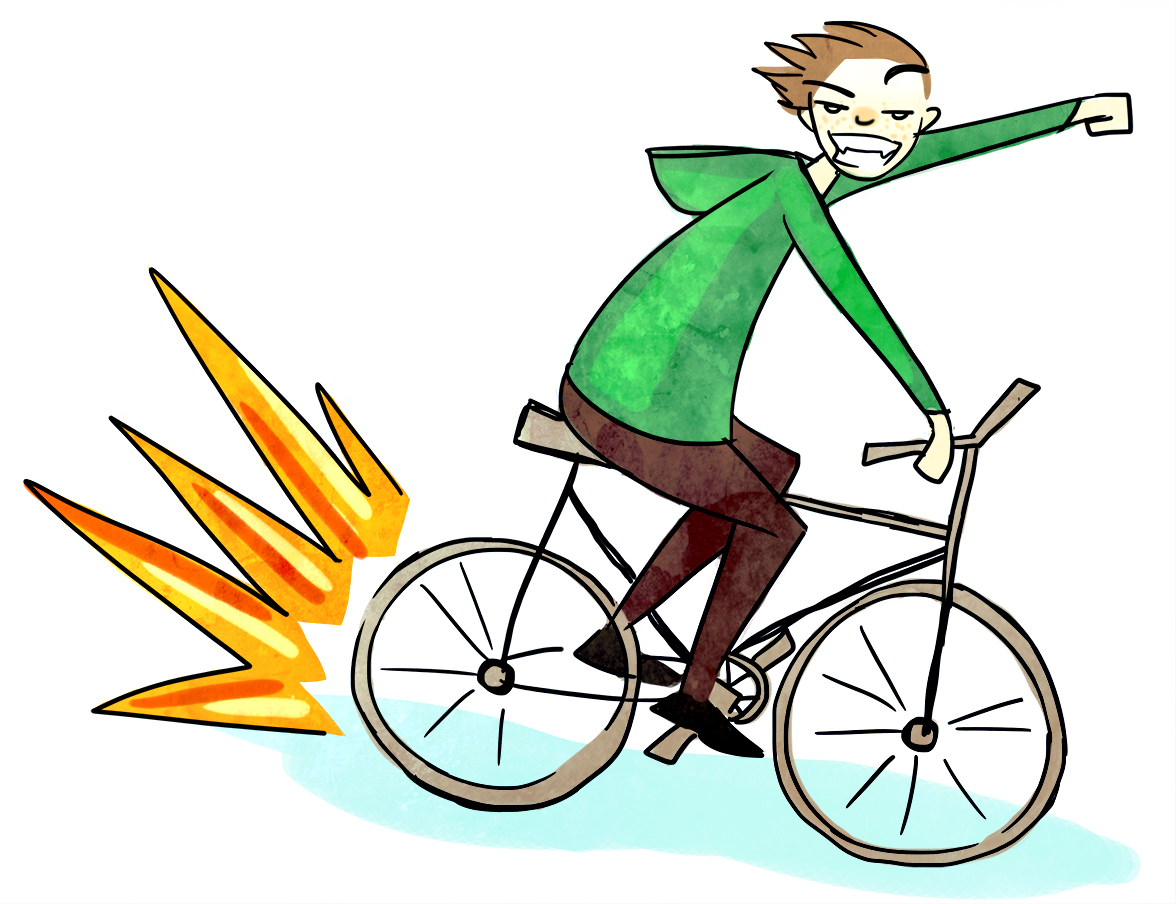My roommate recently had a near collision with a cyclist at the intersection of Mont-Royal and Saint-Urbain. She, as a pedestrian, had the right of way; the cyclist did not. As a morning bike commuter myself, I have seen firsthand some of the liberties cyclists take with traffic laws. This is dangerous. While some cyclists may be occupied with getting to class on time or thinking about work commitments, it only takes a few seconds for a collision and fatal injury to occur. In recent years, Montreal has made efforts to provide the proper infrastructure and safety measures to ensure cyclists can share the road. Cyclists must do their part, too, by abiding by the rules of the road.
In 2013, the Montreal municipal government allocated a $10 million annual budget to invest in new bike paths and make certain sections of the city safer for cyclists. In recent years, there has been significant growth in the number of cyclists in the city, with cyclists now representing 2.9 per cent of morning commuters in Montreal compared to 2.5 percent in Ottawa and 2.2 percent in Toronto in 2015. Many McGill students are part of this demographic. This is progress, and as Montreal makes room for cyclists to share the road, positive benefits flow to all types of commuters.
There is a double standard between vehicles and cyclists, however: The former must follow the rules and largely does so, while the latter often behave as though the rules do not apply to them. I see this type of behaviour on a regular basis; for example, bikers often fail to stop at a red light or refuse to slow down for a pedestrian who has the right of way.
This is concerning. Cyclists operating on the road must abide by traffic laws, because lives are at stake. In a recent opinion piece for the New York Times, Lucy Madison recounts the devastating cycling collision that took her mother’s life on a busy street in downtown Washington, DC. Similarly, here in Montreal, CBC reported a sharp 50 per cent increase in cycling deaths and a 43 percent increase in serious injuries last year. Moreover, a reckless cyclist not only runs the significant risk of injuring themselves, but also of fatally injuring a pedestrian or another cyclist.
The reward of running a red light to save 30 seconds is not worth the increased risk of collision with a vehicle or a pedestrian. One issue is that there is less of an incentive as a cyclist to follow the rules, because the punishments facing cyclists for breaking traffic laws are much less severe compared to those that apply to drivers. For example, a fine for a cyclist that runs a red light is $15 and three demerit points, whereas a fine for running a red light in a vehicle is $100 and three demerit points. This disparity in penalties sends the message to cyclists that their actions are less severe than and cannot do as much damage as those of drivers, but this should not be the case.
Regardless of penalties, there must be a higher incentive for a cyclist to avoid a collision with a vehicle, because logic dictates that the driver of the car will probably be fine, but the cyclist most likely will not. Whether they like it or not, cyclists are operating as vehicles on the road. Road signs and safety precautions are not merely suggestions, but laws that need to be followed in order to ensure the safety of all those within the Montreal community and, correspondingly, McGill. Cyclists can no longer decide the rules don’t apply to them.










Part of the problem is the incessant promotion of biking as being green and hip, with bike lanes and Bixis everywhere. If you give bikers this inflated ego where they think they’re being virtuous and untouchable by riding a bike, then they’re going to stop obeying traffic laws. Bikes should be treated as what they are: foot-powered cars.
And what are pedestrians in your analogy? Fairy-dust powered cars?
“it only takes a few seconds for a collision and fatal injury to occur”
That’s hyperbole. Can you name the last time a cyclist killed a pedestrian? Ok, now go look up how many pedestrians are killed every year by motorists.
“There is a double standard between vehicles and cyclists, however: The former must follow the rules and largely does so, while the latter often behave as though the rules do not apply to them. ”
I can stand at any number of intersections in the city for 5 minutes and I will see several cars running red lights, and/or speeding. I bet at least half text or talk on their phones whilst driving too. I have no idea why you think motorists follow the law, because they most certainly don’t.
As an aside, you’re equating the danger posed by cyclists to that of motorists, which is laughable. Cars/trucks are exponentially more dangerous than cyclists.
“This disparity in penalties sends the message to cyclists that their actions are less severe than and cannot do as much damage as those of drivers, but this should not be the case.”
Hahahahahahahahah, you cannot be serious… when was the last time you saw someone splattered across the street because they were run over by a cyclist?
Well, the article refers to one on March 9th, 2017. And the answer to how many pedestrians are killed by motorists, last I looked, was somewhere around 4500 in 2016 (in the US).
But keep in mind that there are significantly more motorists than cyclists. So, obviously, the number for motorists is going to be higher than the number for cyclists.
“Regardless of penalties, there must be a higher incentive for a cyclist to avoid a collision with a vehicle, because logic dictates that the driver of the car will probably be fine, but the cyclist most likely will not.” What higher incentive can there be than death?!
I’ll fix the above statement for you: “The reality is that there must be a higher incentive for drivers to avoid a collision, because logic dictates that the driver of the car will be fine, but a cyclist or pedestrian will not.”
Hi–no offense, but it seems like the author is in need of some serious education on this issue. The issue isn’t that there’s a “double standard”, but rather that bikes are not cars, and traffic laws were designed for cars. Bikes can safely treat red lights as stop signs and stop signs as yield signs. This has shown by many studies, and is allowed for in the laws of an increasing number of jurisdictions.
I’d suggest starting here to familiarize yourself: https://en.wikipedia.org/wiki/Idaho_stop
Then move on to here: https://cyclingmagazine.ca/sections/news/the-idaho-stop-gets-added-momentum-with-chicago-study/